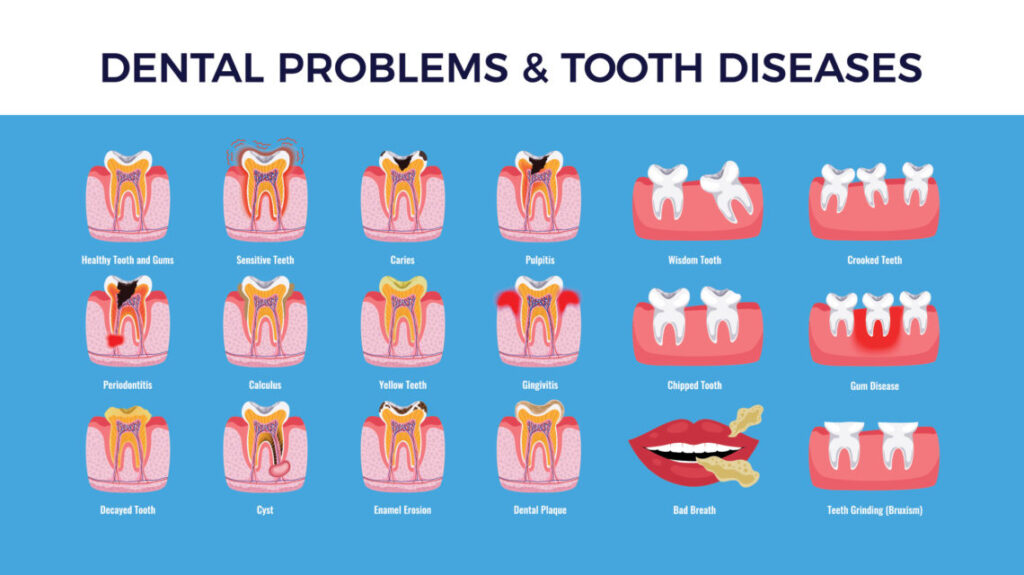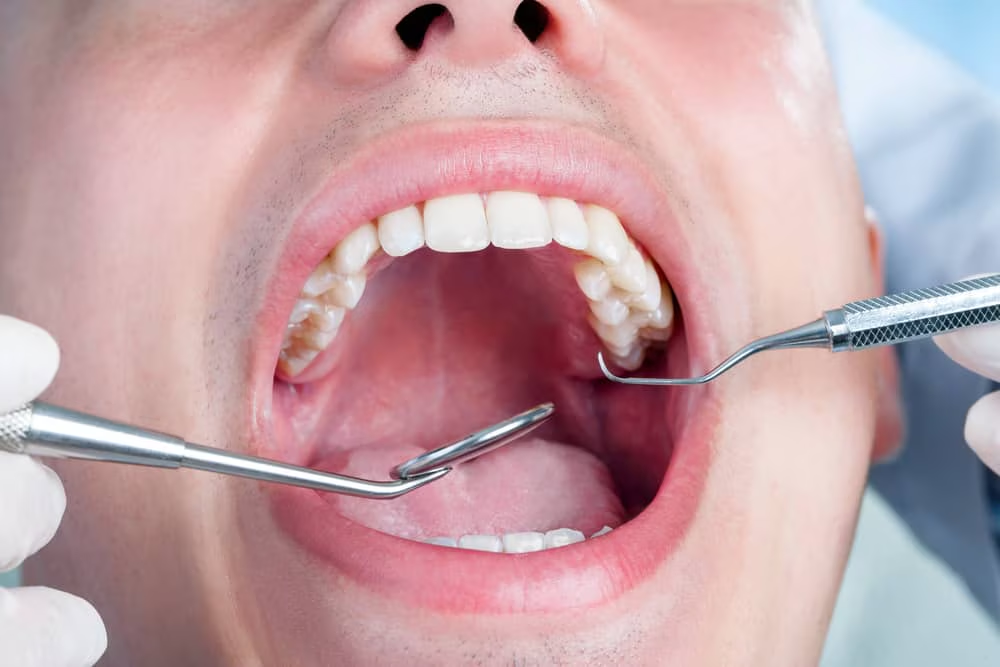When was the last time you thought about your dental health beyond brushing and flossing? It’s easy to take our teeth for granted, isn’t it? But imagine the scenario where a simple toothache turns into a nightmare, not just for your health but for your wallet as well. This isn’t just about avoiding cavities; it’s about understanding the far-reaching financial implications of dental illnesses and the treatments required to combat them.
In today’s world, where healthcare costs are skyrocketing, dental health often takes a backseat. Many of us think of dental visits as optional until a problem arises, but this mindset can lead to severe financial strain. The cost isn’t just personal; it ripples through our economies and healthcare systems, causing significant economic burdens. From simple fillings to complex root canals and braces, the expenses can quickly add up, making dental care a substantial aspect of our financial planning.
This article explores the multifaceted financial impacts of dental illnesses and treatments. We will delve into what dental health truly entails, the costs associated with neglecting it, and the economic burden it places on both individuals and society. Moreover, we’ll discuss the role of insurance, the benefits of preventive care, and future trends that might shape the economics of dental health. Whether you’re someone trying to navigate your dental care budget or simply curious about the economics behind those gleaming smiles, this article will offer insights and advice to keep both your teeth and finances in check.
Understanding Dental Health
Dental health is more than just a white, shining smile. It encompasses the condition of your teeth, gums, and the entire oral-facial system that allows you to smile, speak, and chew. Maintaining good dental health is crucial as it directly impacts overall health. Poor oral health can lead to dental diseases like cavities, gum diseases, and oral cancer, each with varying degrees of severity and financial implications.
Dental illnesses, such as cavities and periodontal disease, often arise from plaque buildup—a sticky film of bacteria that forms on teeth. Neglecting dental health can lead to these bacteria eroding enamel, inflaming gums, and, in severe cases, causing tooth loss or systemic infections. Additionally, lifestyle factors such as smoking, excessive alcohol consumption, and a diet high in sugar can exacerbate these issues, further complicating one’s health and financial situation.
The Cost of Neglecting Dental Health
Ignoring dental health can lead to more than just a painful toothache. The consequences of untreated dental issues can spiral into significant health complications, affecting your quality of life and economic stability. For example, untreated cavities can progress to abscesses or systemic infections, requiring emergency care and costly procedures.
The financial burden on individuals can be overwhelming. Dental treatments can range from hundreds to thousands of pounds, depending on the complexity of the issue. For families without adequate insurance, these costs can quickly deplete savings and cause financial distress. Furthermore, the long-term health implications of neglected dental care can lead to chronic conditions, further increasing medical expenses and affecting productivity.

Moreover, the economic impact extends beyond individuals to healthcare systems. Public health services face immense pressure and costs due to preventable dental illnesses. Emergency room visits for dental problems are common and costly, diverting resources from other critical areas of healthcare.
Dental Treatments and Their Costs
Dental treatments vary widely in complexity and cost. Preventive care, such as regular check-ups and cleanings, is relatively inexpensive compared to restorative procedures. However, the cost of preventive care can still be a barrier for many individuals, leading to delayed treatments and higher costs down the line.
Common dental procedures include fillings, root canals, crowns, and orthodontics. Fillings for cavities can range from £50 to £300, depending on the material used and the dentist’s location. Root canals, necessary for infected or severely decayed teeth, can cost between £250 and £1000, excluding the cost of a crown, which can add another £250 to £800 to the bill.
Geographical location significantly impacts treatment costs. Urban areas often have higher dental fees due to increased overhead costs, while rural areas may offer more affordable options but with limited access to advanced treatments. Understanding these cost variations is crucial for individuals seeking cost-effective dental care.
Insurance and Dental Care
Dental insurance plays a vital role in managing dental care costs. However, it differs significantly from general health insurance. Most dental insurance plans cover preventive care, such as cleanings and X-rays, but offer limited coverage for major procedures like root canals and orthodontics. Policyholders often face annual maximums, typically between £500 and £1,500, beyond which they must pay out-of-pocket.
Private insurance options vary, with some offering more comprehensive coverage at a higher premium. Conversely, national healthcare systems like the NHS provide essential dental services but often have long waiting times and limited treatment options. This discrepancy creates financial challenges for individuals requiring immediate or extensive dental care.
Coverage gaps in dental insurance can lead to significant financial burdens. Many plans do not cover cosmetic procedures, orthodontics for adults, or advanced restorative treatments. As a result, individuals must carefully evaluate their insurance options and budget for potential out-of-pocket expenses.
The Role of Preventive Care
Preventive care is the cornerstone of maintaining good dental health and reducing long-term costs. Regular check-ups and cleanings help detect issues early, preventing more extensive and expensive treatments. The financial benefits of preventive care are clear: it is more cost-effective to maintain oral health than to treat problems after they arise.
Despite its importance, access to preventive dental services remains a challenge for many. Barriers such as cost, lack of insurance coverage, and limited availability of dental professionals in certain areas hinder individuals from seeking regular care. Addressing these barriers is essential to promote preventive care and reduce the financial burden of dental illnesses.
Economic Impact on Healthcare Systems
The financial implications of dental illnesses extend beyond individual costs, impacting healthcare systems at large. Public healthcare services, such as the NHS, bear the burden of treating preventable dental conditions. Emergency room visits for dental issues are costly and divert resources from other critical areas of healthcare.
The economic impact of dental illnesses also affects workforce productivity. Dental pain and untreated oral conditions can lead to absenteeism and reduced work performance, resulting in lost productivity and economic losses for businesses. Addressing dental health as a public health priority is crucial for mitigating these economic impacts and improving overall public health.
Societal Implications of Dental Health Costs
The financial burden of dental health is not equally distributed across society. Socioeconomic disparities significantly affect access to dental care and the ability to afford treatments. Low-income individuals and families often face barriers to accessing dental services, leading to higher rates of untreated dental illnesses and associated financial strain.
The societal implications of dental health costs extend to productivity and workforce participation. Dental pain and untreated conditions can hinder individuals’ ability to work effectively, impacting their earning potential and overall quality of life. Addressing these disparities is essential to promote equitable access to dental care and improve health outcomes for all.

Future Trends in Dental Health Economics
The future of dental health economics is shaped by technological advancements and evolving healthcare policies. Innovations in dental treatments, such as minimally invasive procedures and digital dentistry, hold the potential to reduce costs and improve access to care. However, these advancements may also bring new financial challenges, requiring careful consideration and planning.
Technology plays a crucial role in reducing dental care costs. Tele-dentistry and virtual consultations offer convenient and cost-effective alternatives to in-person visits, expanding access to care for individuals in remote areas. Additionally, advancements in dental materials and techniques contribute to more durable and cost-effective treatments.
Healthcare policies regarding dental care are also evolving. Policymakers are increasingly recognising the importance of oral health in overall well-being and exploring ways to integrate dental care into broader healthcare systems. These policy changes have the potential to improve access to care and reduce the financial burden of dental illnesses on individuals and healthcare systems.
Conclusion
In conclusion, the financial impact of dental illnesses and treatments is a complex issue with far-reaching implications for individuals and society. Neglecting dental health can lead to severe health complications and financial strain, highlighting the importance of preventive care and access to affordable treatments. Dental insurance plays a crucial role in managing costs, but coverage gaps and disparities in access to care remain significant challenges.
Addressing the financial burden of dental health requires a comprehensive approach, involving individuals, healthcare providers, policymakers, and society as a whole. By prioritising preventive care, leveraging technological advancements, and promoting equitable access to dental services, we can improve oral health outcomes and reduce the economic burden of dental illnesses.
FAQs?
How can I reduce my dental care costs?
Reducing dental care costs involves prioritising preventive care, maintaining good oral hygiene, and exploring affordable treatment options. Regular check-ups and cleanings can help detect issues early and prevent costly procedures. Additionally, consider dental discount plans or community clinics for more affordable services.
What are the most cost-effective dental treatments?
Preventive treatments, such as regular cleanings and fluoride treatments, are among the most cost-effective options for maintaining oral health. Sealants and basic restorative procedures like fillings are also relatively affordable compared to more complex treatments like root canals or orthodontics.
How does dental insurance work?
Dental insurance typically covers preventive care, such as cleanings and X-rays, and provides partial coverage for basic and major procedures. Most plans have annual maximums, deductibles, and co-pays, requiring individuals to pay a portion of the costs out-of-pocket. It’s essential to review your insurance plan to understand coverage details and potential gaps.
Are there affordable options for dental care without insurance?
Yes, there are several affordable options for dental care without insurance. Consider community clinics, dental schools, or discount dental plans that offer reduced rates for services. Additionally, some dentists offer payment plans or sliding scale fees based on income.
How often should I visit the dentist to prevent costly procedures?
It’s generally recommended to visit the dentist every six months for routine check-ups and cleanings. Regular visits help detect issues early and prevent more extensive and costly procedures in the future. However, your dentist may recommend more frequent visits based on your individual needs.
What are the most common dental issues that lead to high costs?
Common dental issues that can lead to high costs include cavities, gum disease, and tooth decay. These conditions often require restorative treatments like fillings, root canals, or crowns, which can be expensive. Addressing these issues early through preventive care can help reduce costs.
Can diet and lifestyle changes significantly impact dental health costs?
Yes, diet and lifestyle changes can significantly impact dental health costs. A balanced diet low in sugar and processed foods can help prevent cavities and gum disease. Additionally, avoiding tobacco and excessive alcohol consumption can reduce the risk of oral health issues, ultimately lowering dental care costs.